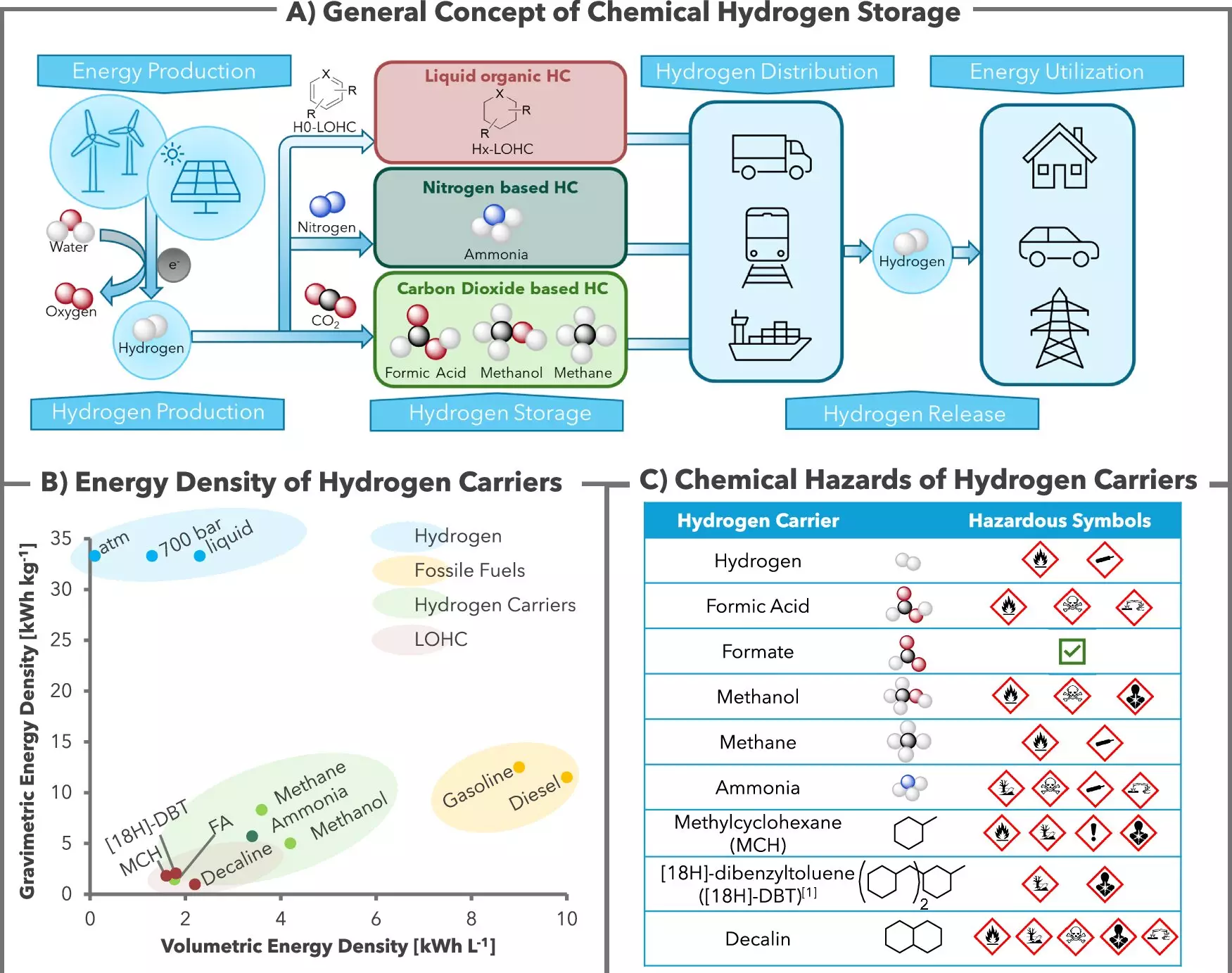The ever-increasing interest in hydrogen as a sustainable energy resource brings to light an essential question: how do we effectively store this volatile gas for safe and efficient use? As we pivot away from fossil fuels, hydrogen emerges as a key player in the energy transition, holding promises for cleaner energy scenarios. Researchers around the globe are actively exploring viable methods for hydrogen storage, yet many challenges remain. A recent study conducted by the Leibniz Institute for Catalysis and H2APEX offers a glimpse of hope, unveiling a novel and efficient way to chemically store hydrogen using potassium bicarbonate.
The innovative method discovered revolves around binding hydrogen (H2) to potassium bicarbonate, a compound commonly recognized as baking soda. This process utilizes a homogeneous catalyst system with ruthenium at its core to facilitate the safe conversion of hydrogen into formate—an innocuous salt derived from formic acid. The researchers, led by Dr. Rui Sang and Ph.D. candidate Carolin Stein, emphasize that this chemical conversion is reversible. This means that under controlled conditions, the stored hydrogen can be recovered whenever necessary without compromising safety or stability.
What sets this approach apart from others is the relatively simple nature of the “ingredients” used in the process. Potassium bicarbonate is widely available, making the technology more accessible for commercial applications. The use of a ruthenium-based catalyst enhances the effectiveness of the reaction, enabling the binding and release of hydrogen under manageable conditions—specifically around 60°C.
One of the significant benefits of this storage system is its technical controllability. Researchers outline that the pressure at which hydrogen is introduced plays a critical role in determining whether it binds to the bicarbonate to create formate or releases from the formate. This reversible reaction presents a convenient mechanism akin to a rechargeable battery where the stored hydrogen can be accessed as needed. The capability to store hydrogen and release it on demand represents an advancement in energy systems that would be particularly beneficial for wind and solar energy setups.
In rural areas, where energy production often exceeds consumption during certain periods, this technology could offer a strategic solution. Essentially, surplus electricity from renewable sources can be converted into hydrogen through electrolysis, subsequently stored as formate for later use, enabling a highly efficient energy management system.
A noteworthy attribute of this process is its CO2-neutral framework. Typically, traditional hydrogen recovery methods produce carbon dioxide as a byproduct, but this innovative system maintains CO2 within the bicarbonate structure. Thus, when hydrogen is extracted, what emerges is purer hydrogen—ideal for fuel cell applications without additional purification processes. The researchers proudly report achieving 50 liters of hydrogen with an outstanding average purity of 99.5% over a series of 40 cycles within a six-month period.
This CO2-neutrality coupled with high purity levels emphasizes the potential of storing hydrogen in a way that aligns with environmental standards, paving the way for a more sustainable hydrogen economy.
As researchers continue to optimize the properties influencing hydrogen storage density and solubility, the collaboration between LIKAT and H2APEX aims to bring these scientific advancements to practical implementation. Plans are underway to develop a larger demonstrator that will facilitate the commercial application of the proposed system by the end of 2025. If successful, this innovative hydrogen storage solution could mark a significant advancement in renewable energy technology, transforming hydrogen from a theoretical component of the energy transition into a practical solution.
While the road to a hydrogen economy remains fraught with challenges, research such as that conducted by LIKAT and H2APEX demonstrates that with the right approach—utilizing simple, safe, and effective compounds—we can harness the power of hydrogen. It is evident that these advancements not only contribute to energy transition but also represent a hopeful leap toward a sustainable future. With hydrogen, we are not merely searching for solutions; we are unearthing a pathway of hope for generations to come.


Leave a Reply